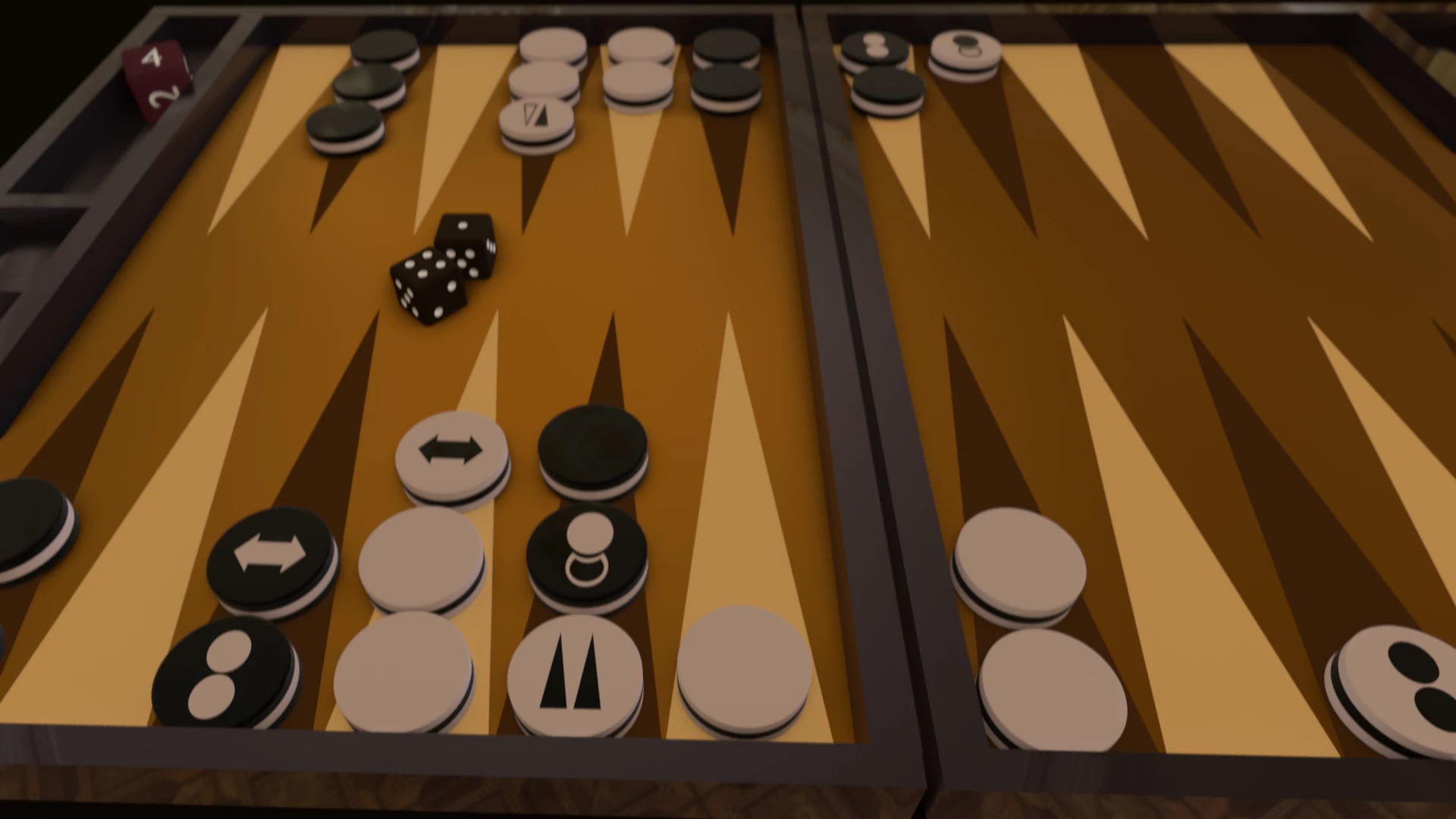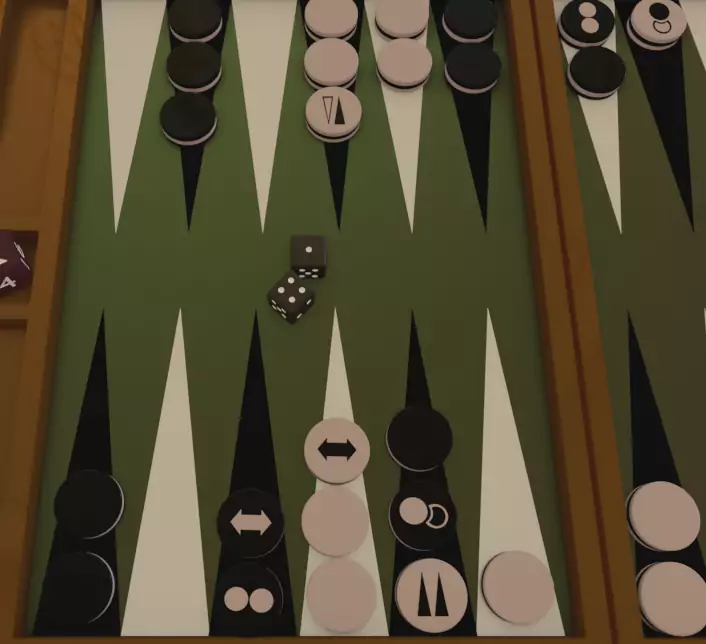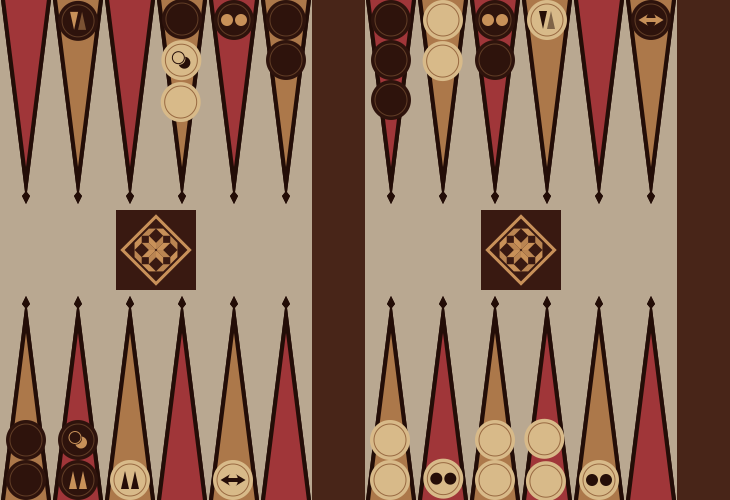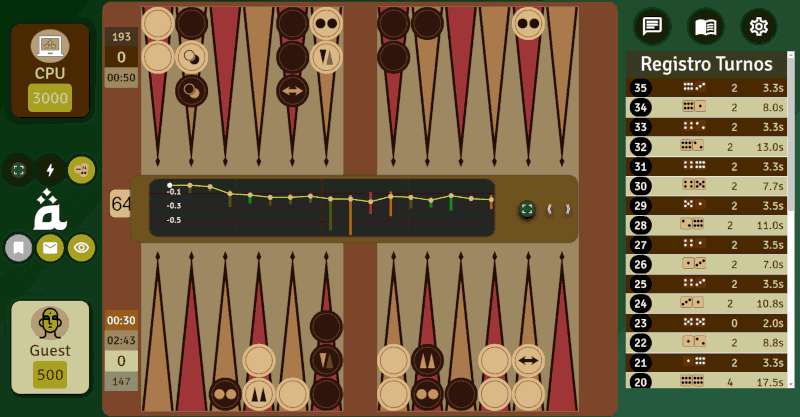Abak Evolution is a Backgammon variant that adds classes of checkers to the game, each with its own set of features and unique behavior.


Specifications
Type
Abstract
Strategy
Strategy

2 Players

9+ Years

15 - 30 min
Complexity
7.5/10
Difficulty
Difficulty
Mechanics
Turn-based
Dice-driven
Perfect information
Abak Evolution uses the same rules of backgammon but adds 5 classes of soldiers. This small change provides outstanding consequences.

General

moves backward and forward 

Druid

traps and holds 

Guard

x2
more powerful than the rest 

Even Wounded

only plays EVEN numbers 

Odd Wounded

only plays ODD numbers 

Soldier

x9
same as classic Backgammon 


You will find a fully-featured web app where you can play against a strong CPU opponent or real people.
You might have a question
Find it here
- Is Abak Evolution more complex than Backgammon?The honest answer is yes, but in exchange, you have a more entertaining and dynamic game. By adding classes to the game, you give an identity to each soldier and have to think of its own features. Additionally, Abak has many more combinations for a dice roll because the movement's order might affect its outcome.
- How different is Abak Evolution from Classic Backgammon?The base rules are almost the same, yet adding classes drastically changes the game.
- A new dimension: The vertical position of the checker matters. This creates a new dimension: the Y-axis. Think of it this way: In Abak, you can't just say that a point has 3 white checkers; you need to specify each, in order.
- More combinations: Each Backgammon position has (3,346,200)² possible Abak Evolution positions.
- Checkers have identity: You have to take care of their individual capacities.
- Movement's order matters: If you move a checker before another one, it might dramatically change the outcome of the roll.
- How can I learn to play Abak Evolution?Use the resources on this website to learn how to play, from Backgammon to Abak. The game UI is a good resource since it highlights the rules.
- Do I need to know how to play Backgammon to learn Abak Evolution?Yes. You need at least a basic knowledge of Classic Backgammon's rules.
- Why is there a limit of 5 checkers per point?Although this rule exists in Classic Backgammon, it's not often used. It adds a lot of instability, especially when bearing off. Abak uses it because I love it, and also for a practical reason: checker visibility.
- Is Abak Evolution slower or longer than Backgammon?Once you are familiarized with the different soldiers, the game speed is fairly similar to Classic Backgammon. Because the general can move backward, sometimes the game is longer (turns-wise) than Backgammon.









